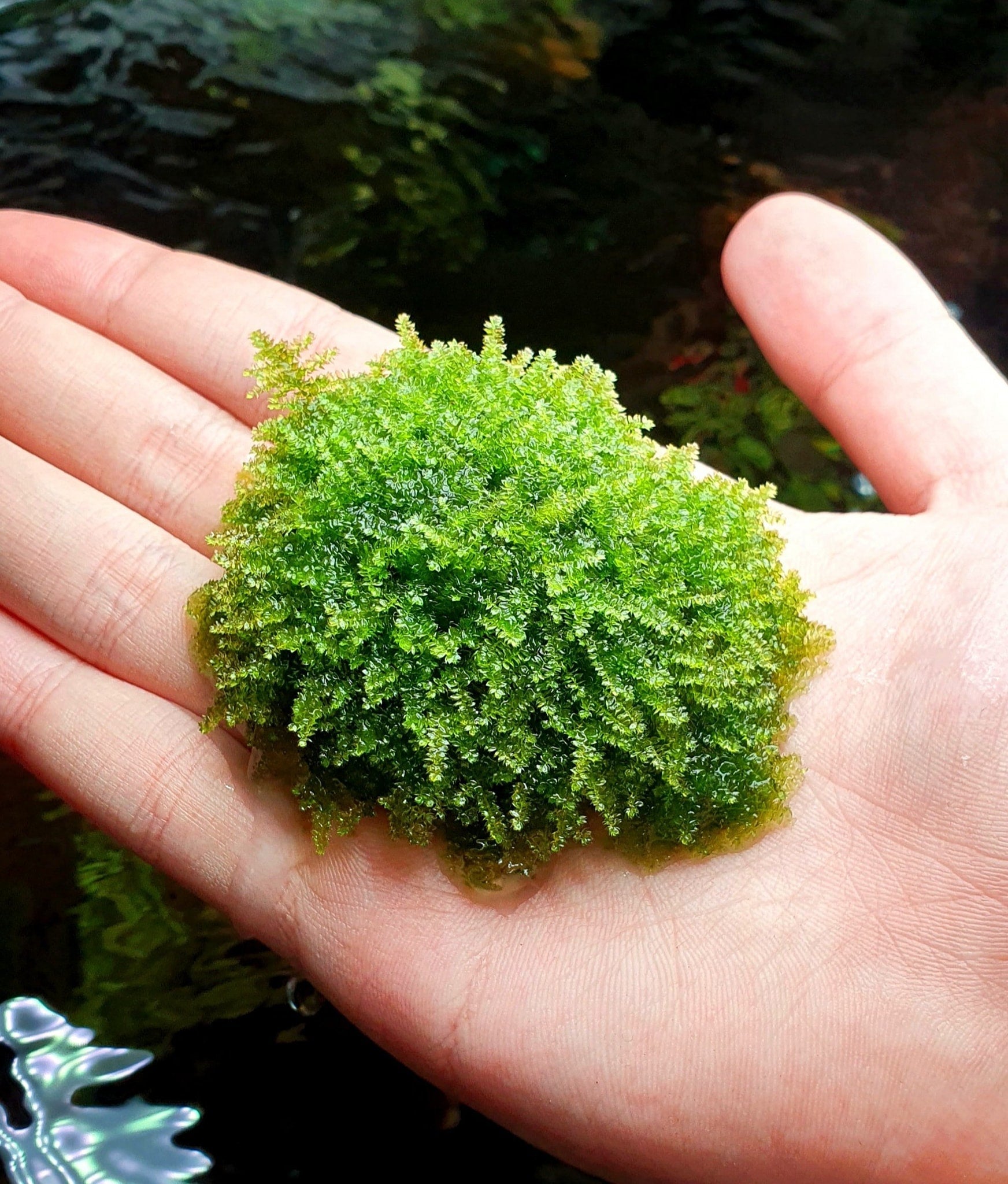
New Batch of Mosses!
We are thrilled to announce that our latest batch of aquarium mosses, meticulously cultivated in our tanks, will soon be ready for sale. These vibrant and healthy mosses have been grown under optimal conditions to ensure they thrive in your aquariums. As we prepare for their release in the coming months, we would like to share insights into the propagation methods of various aquarium moss species, enabling you to maintain and expand your aquatic landscapes effectively.

Popular Aquarium Moss Species and Their Propagation
-
Java Moss (Taxiphyllum barbieri)
-
Description: Java Moss is one of the most commonly available and versatile aquarium mosses. Originating from Southeast Asia, it is undemanding and adaptable to various water conditions.
-
Propagation: Java Moss can be propagated by dividing it into smaller portions and attaching them to substrates like driftwood or rocks. Over time, it will anchor itself and spread across the surfaces. This method is straightforward and effective for beginners.
-
-
Christmas Moss (Vesicularia montagnei)
-
Description: Named for its fir-tree-like fronds, Christmas Moss offers a dense, bushy appearance, making it a favorite for creating lush aquascapes.
-
Propagation: Similar to Java Moss, Christmas Moss can be propagated by dividing it into smaller pieces and securing them to hardscape elements. Ensuring adequate lighting will promote denser growth.
-
-
Flame Moss (Taxiphyllum sp. 'Flame')
-
Description: Flame Moss is known for its unique upward, spiraling growth pattern, resembling flickering flames. This distinctive structure adds vertical interest to aquascapes.
-
Propagation: Propagation involves attaching small clumps to substrates. Given its slow growth rate, patience is key. Regular trimming can encourage a denser formation.
-
-
Weeping Moss (Vesicularia ferriei)
-
Description: Weeping Moss features delicate, cascading fronds that create a weeping effect, ideal for simulating hanging foliage in aquascapes.
-
Propagation: Attach small portions to elevated hardscape areas to accentuate its natural drooping growth. Maintaining stable water parameters will support healthy propagation.
-
-
Peacock Moss (Taxiphyllum sp.)
-
Description: Peacock Moss displays fan-shaped fronds that spread horizontally, offering a lush, carpet-like appearance.
-
Propagation: By securing fragments to flat surfaces, Peacock Moss will gradually form a dense mat. Consistent lighting and nutrient availability will enhance its vibrant growth.
-
General Propagation Techniques
-
Attachment Methods: To propagate these mosses, small fragments can be attached to hardscape materials using fine fishing line, cotton thread, or specialized plant adhesives. Over time, the moss will naturally anchor itself to the substrate.
-
Environmental Conditions: Maintaining appropriate water parameters, such as temperature, pH, and hardness, is crucial for successful propagation. Most aquarium mosses prefer moderately cool water temperatures, typically in the range of 21-24°C.
-
Lighting: While many mosses can tolerate low light conditions, providing moderate lighting will promote healthier and more robust growth.
-
Maintenance: Regular trimming of overgrown areas encourages denser growth and prevents the moss from overshadowing other plants in the aquarium.
By understanding these propagation methods, you can effectively cultivate and maintain various aquarium moss species, enhancing the aesthetic and ecological balance of your aquatic environment. We are committed to providing you with high-quality, sustainably cultivated mosses to support your aquascaping endeavors.
Stay tuned for the availability of our cultivated aquarium mosses, and feel free to reach out with any questions or for further guidance on incorporating these beautiful plants into your aquariums.

Leave a comment